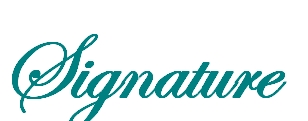
BENEFIT SOLUTIONS, INC.
OFFICE: (813) 605-
FAX: (813) 605-
12000 N. Dale Mabry Highway
Suite 110
Tampa, Florida 33618
TYPES OF PLANS
Working closely with your investment advisor, our custom approach to designing your benefits plan draws from a full range of plan types and investment companies. This flexibility and expertise allows us to incorporate the best choices for your company and employee needs. Our plans include:
Profit Sharing Plans
• Profit sharing plans are a form of defined contribution plan, meaning the contribution amount is defined each year, generally as a percentage of compensation.
• A profit sharing plan may be established with a discretionary contribution formula, which allows the employer to determine the amount deposited according to current business conditions.
• Allocations of the contribution amount are based on a formula using compensation as a controlling factor. Although this type of program allows complete flexibility in annual contribution amounts, the general level of contribution is lower than a money purchase plan.

401(k) Plan (including Safe Harbor)
• This is a modified type of profit sharing plan which allows the employees to voluntarily
contribute, through payroll deduction, an amount of their salary to the plan. These
"elective deferrals" are pre-
• In addition to the elective deferrals, the employer may structure the plan to accept various types of employer contributions to the plan, including matching types of contributions and profit sharing contributions.
• Although some 401(k) plans are established with funding only from employee elective deferrals, this type of program is generally created to form a funding partnership between employer and employees. It is one of the most popular programs available due to its flexibility, and the fact that funding by employees can relieve the employer of some of the burden of annual contributions, while still providing an employee retirement benefit program of great perceived value.
Defined Benefit Plans
• A Defined Benefit Plan allows larger deductions for the business owner. Through the use of sophisticated design techniques, more of the plan contribution can be geared toward the principal of a business.
• Unlike a corporate Defined Benefit Plan to which an employer can make deductible
contributions in excess of an employee’s compensation, an employer’s deductible contribution
on behalf of a self-
• In a Defined Benefit Plan, the actuary first determines the amount needed at retirement to pay the business owner’s annual benefit as set by a formula in the Plan. The actuary then determines the amount that must be contributed to the Plan each year to reach the amount needed at retirement. The actuary uses various factors to compute the annual contribution, including an interest factor (the rate of return on plan investments). This interest factor is usually conservative, even when market rates are greater.
• Investment gains and losses affect the amount of each year’s contribution. Thus,
if the interest assumption is 5 percent and the investment return is 9 percent, the
investment gain reduces the business owner’s future contributions. If the investment
return is only 2 percent, the investment loss increases the subsequent contributions.
Whether or not the interest assumption holds true, the annual adjustment in required
contributions does not affect the final result -
• If an employee participates in both a Defined Benefit Plan and a Defined Contribution Plan that are maintained by the same employer, a special formula is used to determine the combined maximum limit on benefits and contributions. The sum of the Defined Benefit Plan fraction and the Defined Contribution Plan fraction cannot exceed 1.0.
Cash Balance Plans



| PD&I |
| Plan Administration |
| Plan Document |
| Compliance Testing |
| Participants |
| E Signature |